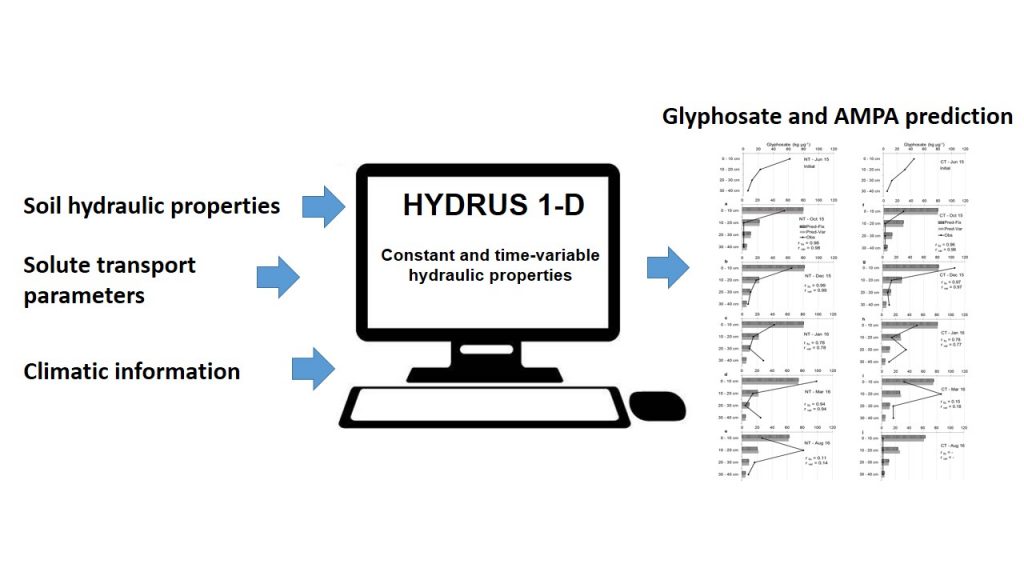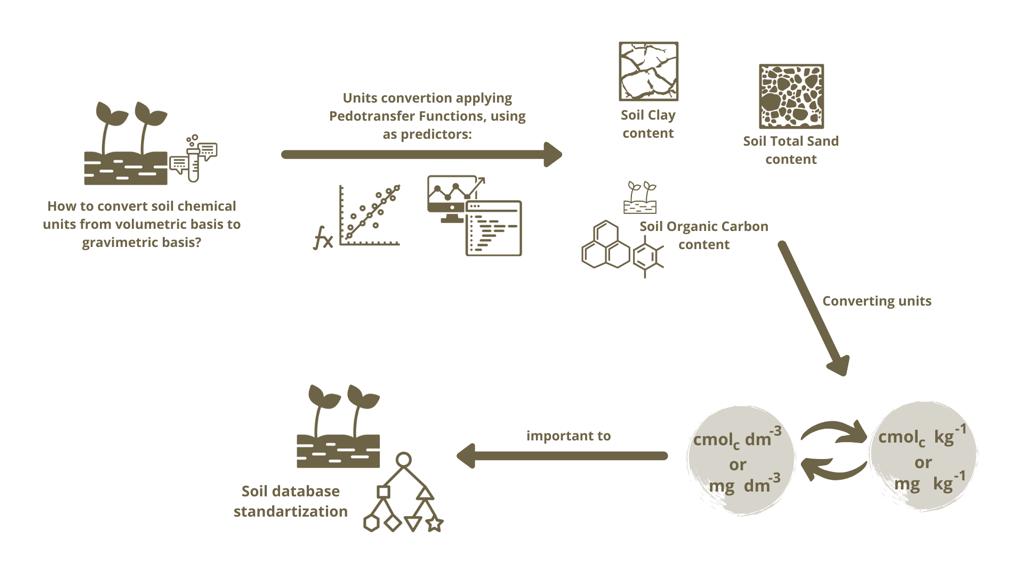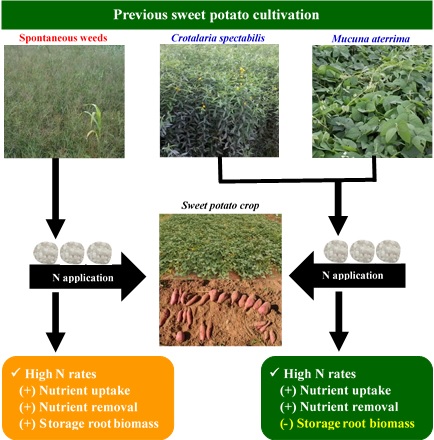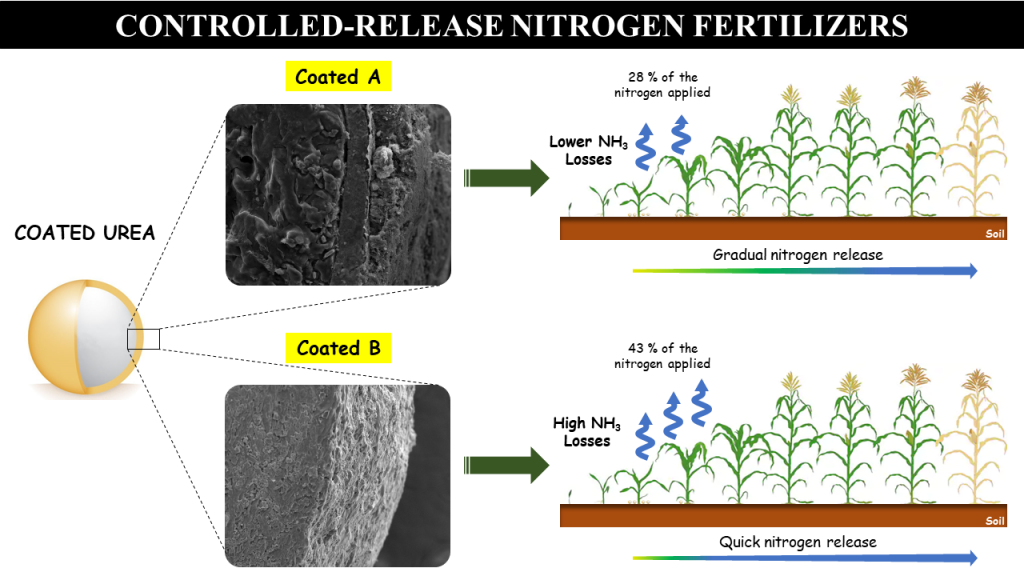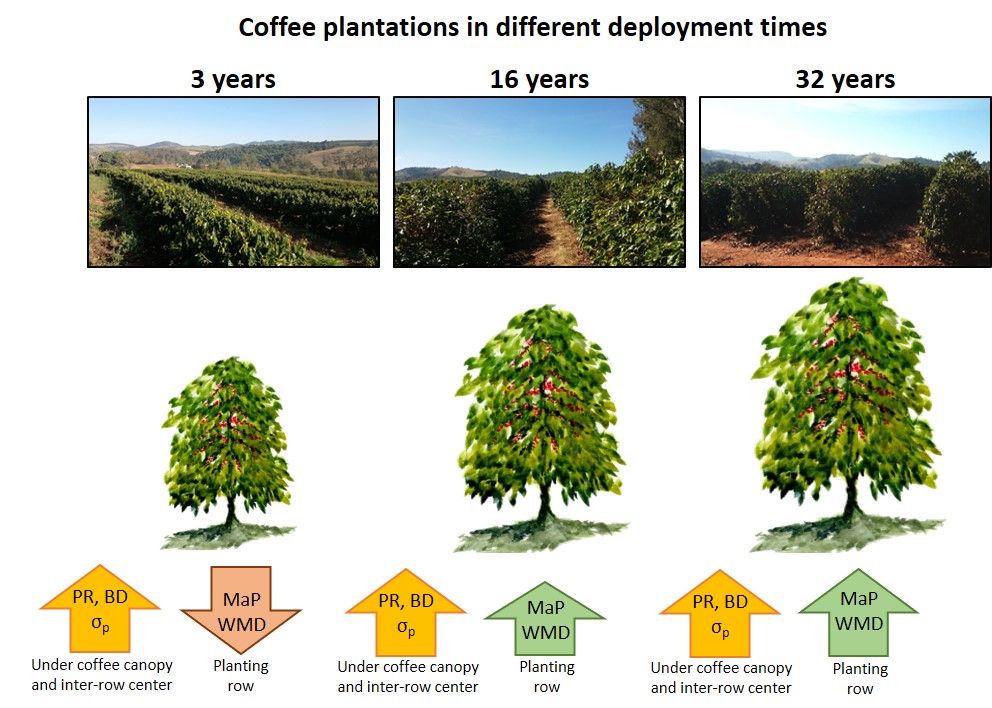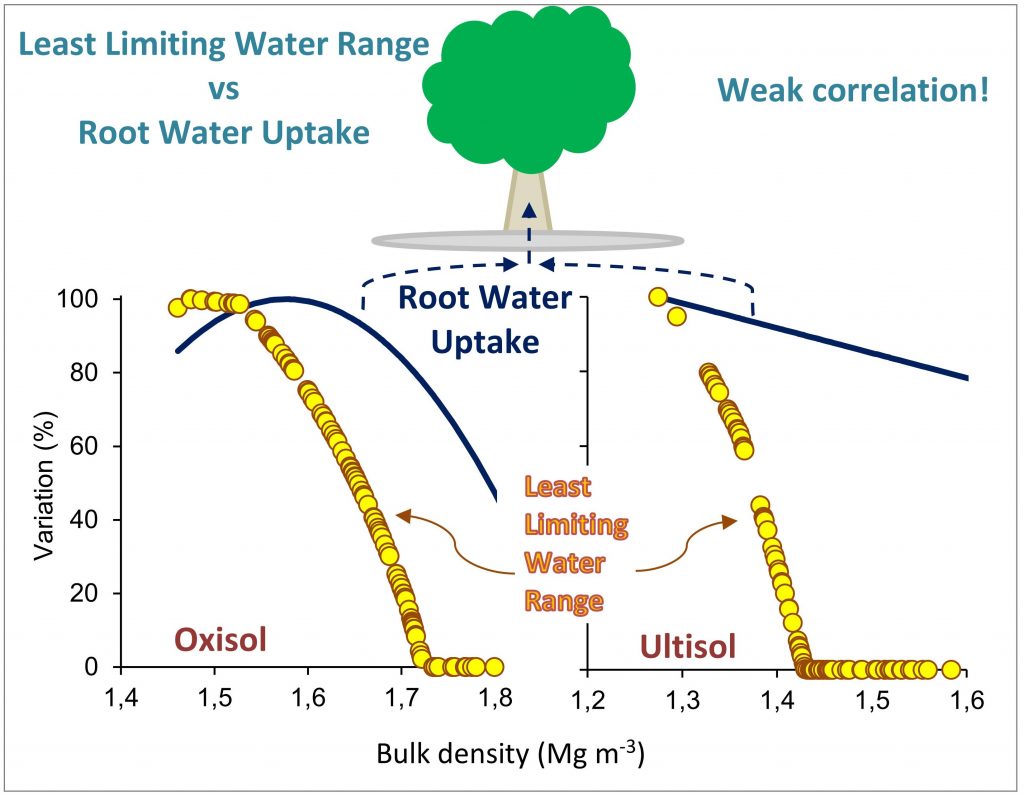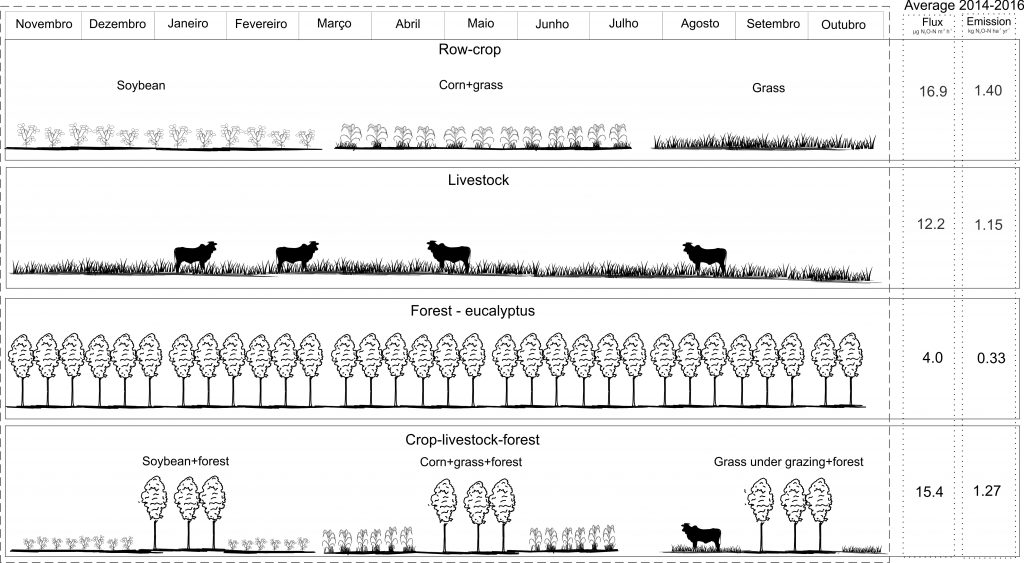Glyphosate dynamics prediction in a soil under conventional and no-tillage systems during the crop cycle
05/Jun/2020
ABSTRACT Simulation models are efficient tools to predict the fate of different solutes in agricultural soils. This work aimed to compare measured and predicted glyphosate and AMPA (aminomethyl phosphonic acid; its main metabolite) contents in a soil under no-tillage (NT), and conventional tillage (CT); and to compare the predictions considering constant and time-variable hydraulic properties. Additionally, we evaluated the ability of the model to predict glyphosate and AMPA accumulation during the crop cycle. Hydrus 1-D code was used to predict […]
Pedotransfer functions: the role of soil chemical properties units conversion for soil classification
28/May/2020
ABSTRACT Chemical soil analysis data can be expressed by weight (i.e., gravimetric basis) or volume (i.e., volumetric basis) of the fine earth (sieved ≥2 mm), resulting in different units, cmolc kg-1 and cmolc dm-3, respectively. The research problem is that the difference between methods to express the same soil properties hinders the comparison of results and database or dataset standardization. This paper aims to develop pedotransfer functions (PTF) to obtain the density of fine earth, which will then be used […]
Nutrient uptake and removal by sweet potato fertilized with green manure and nitrogen on sandy soil
26/May/2020
ABSTRACT Sweet potato crops take up large amounts of nutrients, especially nitrogen. In low-fertility soils, the addition of nitrogen (N) increases the sweet potato yield. Green manure may be an alternative method for improving soil quality and supplying nutrients to this crop. This study aimed to evaluate the plant’s nutritional status and the amount of nutrients taken up and removed by sweet potato plants subjected to green manure and mineral N fertilization. The experiment was carried out in the field […]
Termite participation in the soil-forming processes of ‘murundus’ structures in the semi-arid region of Brazil
26/May/2020
ABSTRACT Regularly spaced earth mounds called “murundus” are scattered in several landscapes in the semi-arid region of Brazil. Although recent evidence indicates that termites are involved in the building of murundus, the contribution of these insects to soil-forming processes in those structures remains poorly understood. In this study, we tested a set of hypotheses to examine whether there are consistent evidence for suggesting the participation of termites in the formation of murundus soils. Morphological and physicochemical features of murundus were […]
Soil loss as a desertification risk indicator: mapping and simulation in the Salitre River Sub-Basin, Northeast Brazil
26/May/2020
ABSTRACT Discussions on desertification frequently highlight soil erosion as a striking feature of this phenomenon. In particular, the high spatial density of gullies represents a strong indication of the formation of desertification hotspots. In this study, through field activities and Monte Carlo simulations, we estimated the volume of soil loss by linear erosion on the slopes of the middle course of the Salitre river in the North of Bahia State. This estimative contributes to the recognition of a desertification process […]
Establishment of critical nutrient levels in soil and plant for eucalyptus
26/May/2020
ABSTRACT The adoption of more productive and nutrient-demanding genotypes, in addition soils with low availability of nutrients of soils under forest plantations, lead high fertilizer demand and justify research that seeks to rationalize the use of these inputs. Therefore, we aimed with this research to determine classes of interpretation of soil fertility using boundary line (BL) and estimate macronutrient sufficiency ranges for eucalyptus. Fertility classes and sufficiency ranges were obtained using a database of areas cultivated with eucalyptus in the […]
Controlled-release nitrogen fertilizers: characterization, ammonia volatilization, and effects on second-season corn
14/May/2020
ABSTRACT The development of new fertilizer technologies to reduce nitrogen (N) losses from an agricultural system and to increase nitrogen use efficiency (NUE) is a global research objective. Controlled-release nitrogen fertilizers have shown great potential for reducing N losses and synchronizing N release according to crop demand, thereby improving the NUE. The objective of this study was to characterize controlled-release nitrogen fertilizers and compare them with conventional nitrogen sources in terms of N release, N loss via NH3 volatilization, and […]
Structural quality and load-bearing capacity of an Ultisol (Argissolo Vermelho amarelo) in mechanized coffee areas with different deployment times
14/May/2020
ABSTRACT The mechanized management systems used in Brazilian coffee plantations generate heavy machine traffic and lead to the application of loads on the soil that affect the soil structure and lead to widespread compaction. This study aimed to evaluate the influence of mechanized operations on coffee plantations with different deployment times on the soil structural quality of an Ultisol, based on its soil physical properties and soil load-bearing capacity. The experiment was carried out in Muzambinho, São Paulo State, Southeast […]
Using root water uptake estimated by a hydrological model to evaluate the least limiting water range
14/May/2020
ABSTRACT The least limiting water range (LLWR) has been extensively determined, but evaluating if LLWR can indeed indicate soil physical stress on plant growth is still a controversial issue. In this study, we used the Hydrus-1D hydrological model to simulate root water uptake (RWU) to analyze if RWU and LLWR are correlated under stress conditions. The LLWR was determined in a sandy-loam Ultisol and a clayey Oxisol. In both soils, RWU extracted by plants (leaf area index set as 3) […]
Nitrous oxide emissions from a tropical Oxisol under monocultures and an integrated system in the Southern Amazon – Brazil
24/Apr/2020
ABSTRACT Although agriculture and livestock systems represent important sources of N2O from the soil, they may also aid in emissions mitigation, mainly when integrated systems are taken into account, such as crop-livestock-forest, for food production. This work assessed the soil N2O emissions from a tropical Oxisol under row-crop, livestock, forest monocultures, and an integrated crop-livestock-forest system in the Southern Amazon – Brazil. Soil N2O emissions were measured using static chambers from November 2014 to October 2016 in four soil use […]

